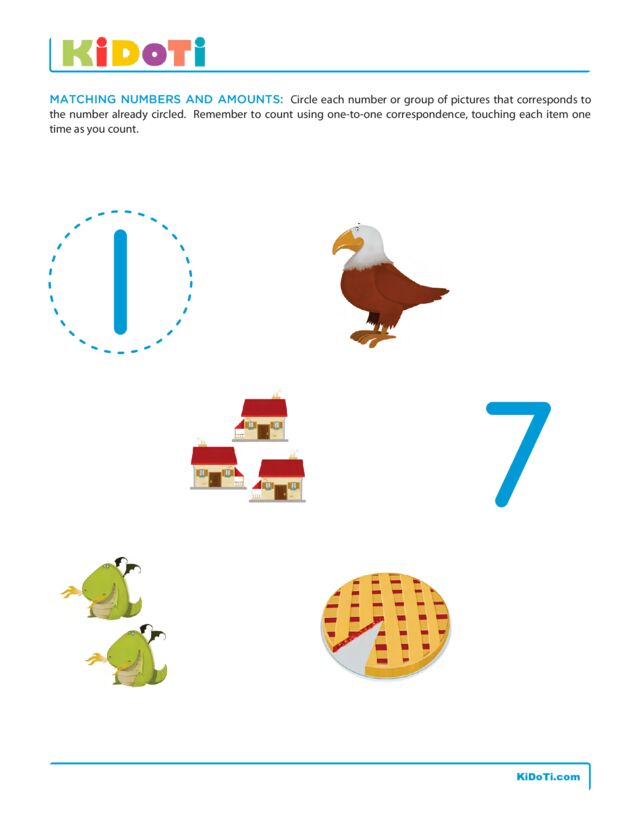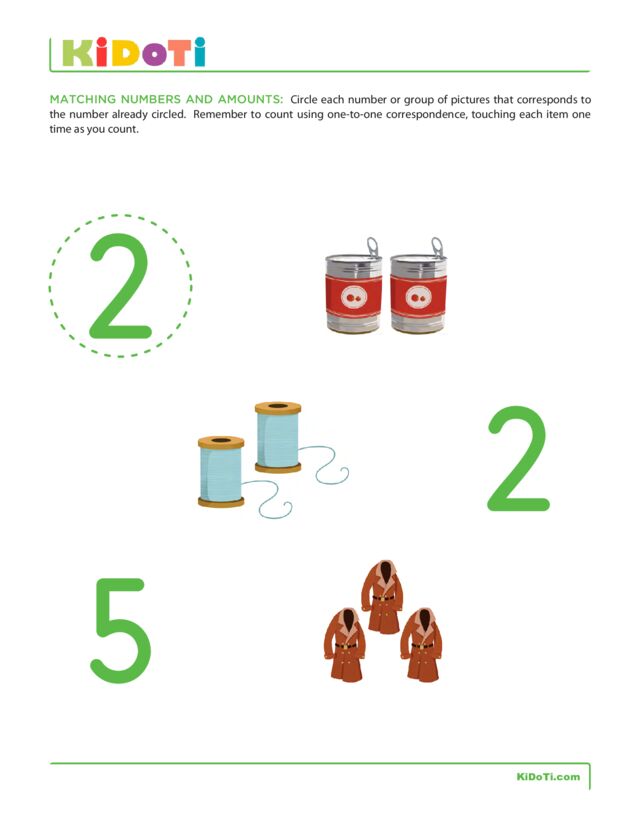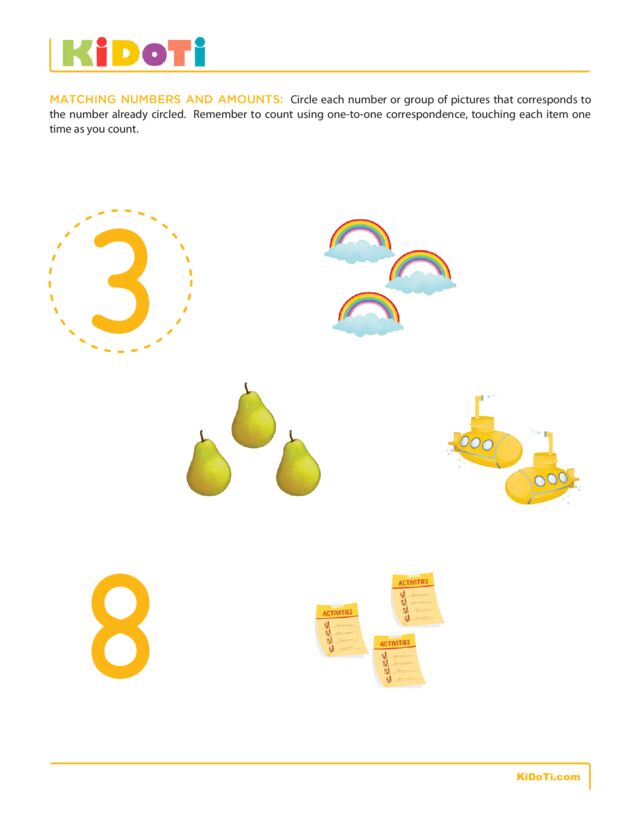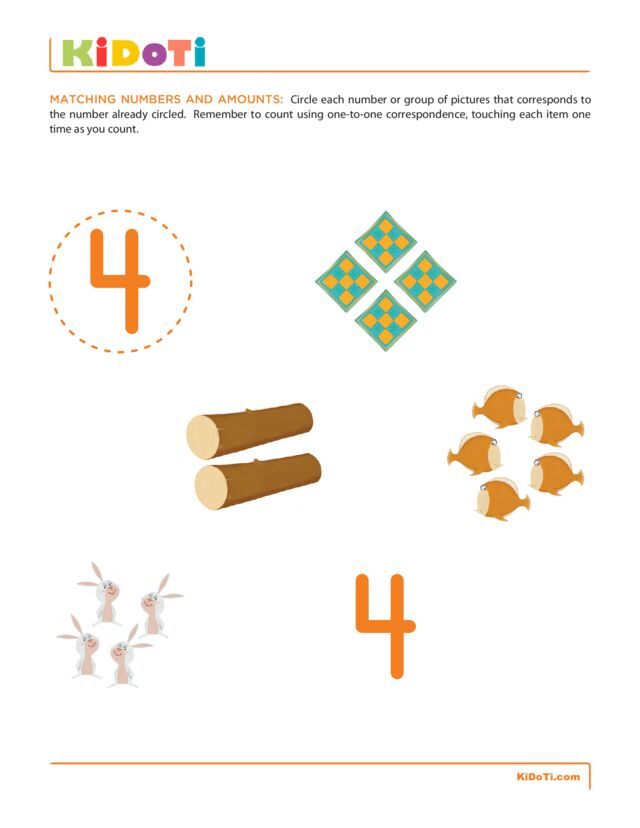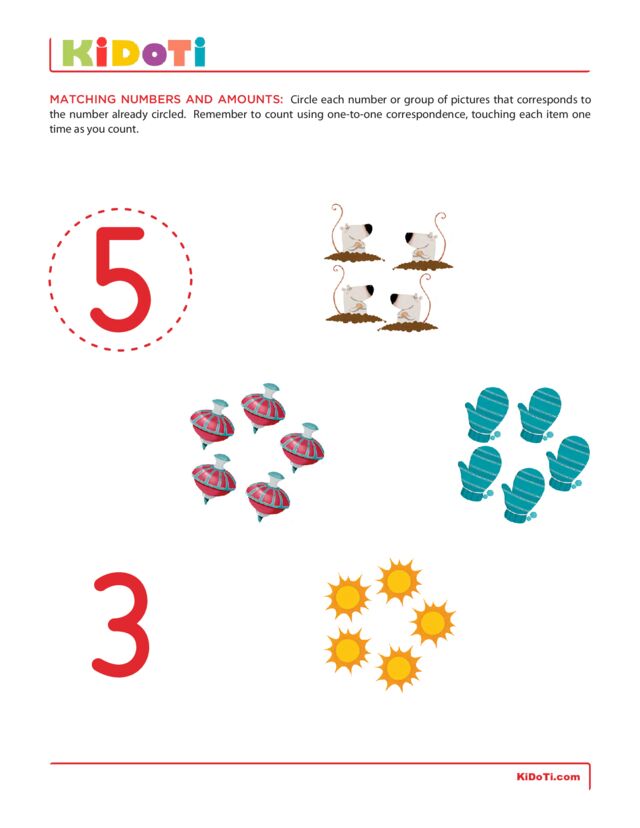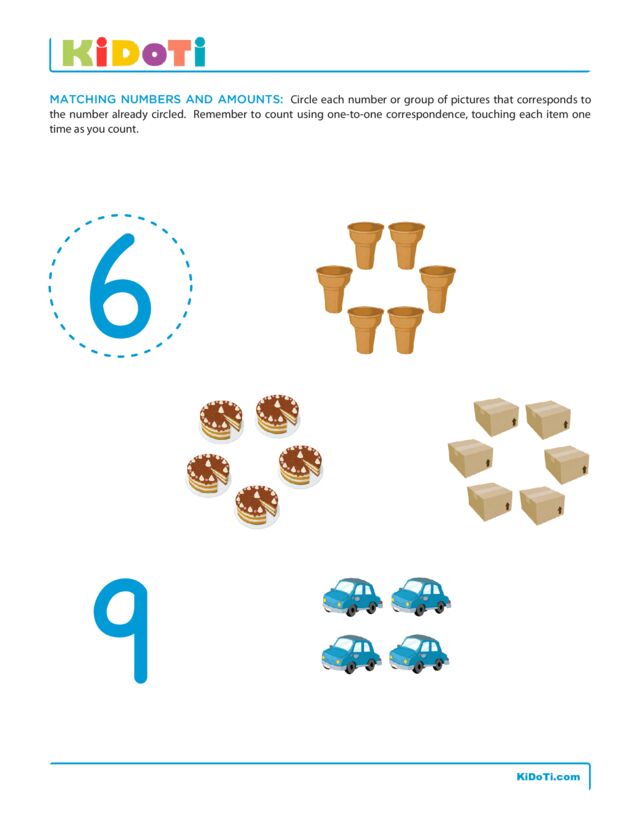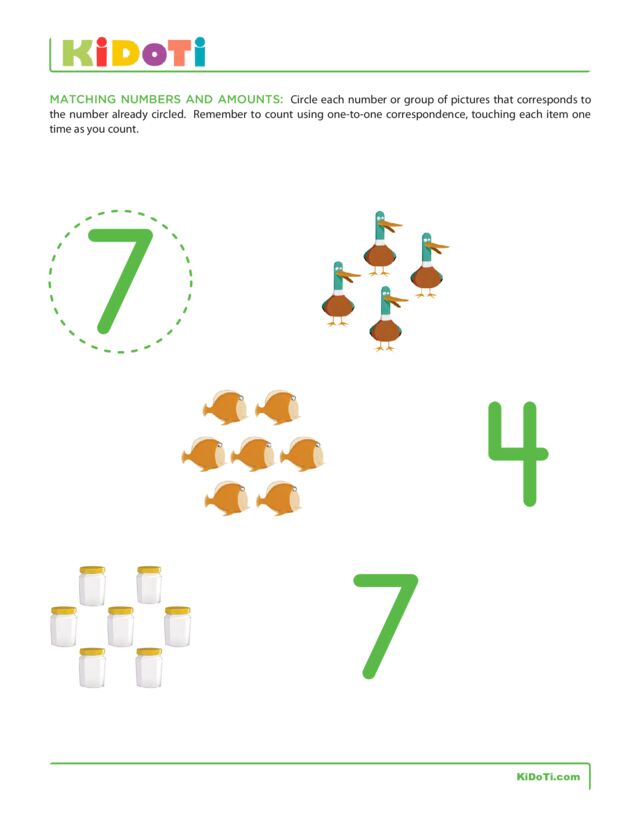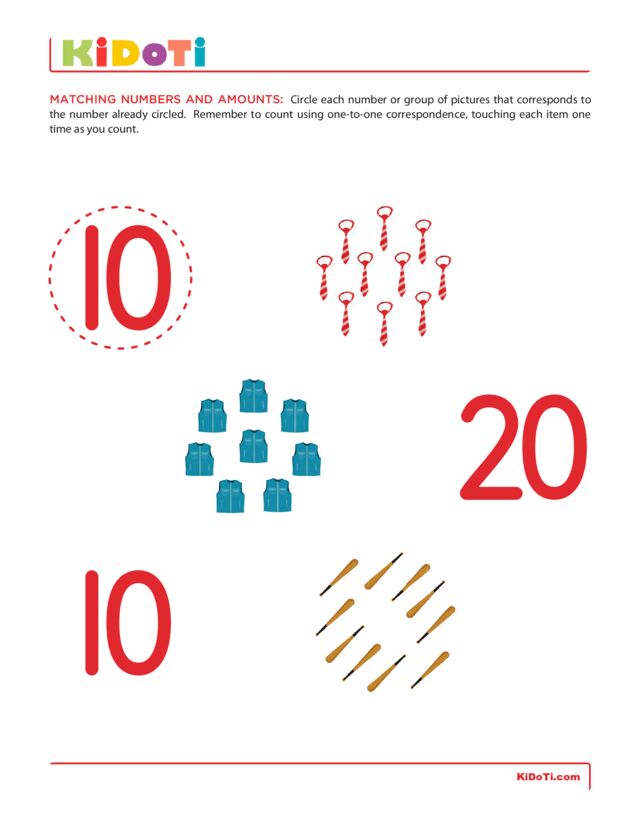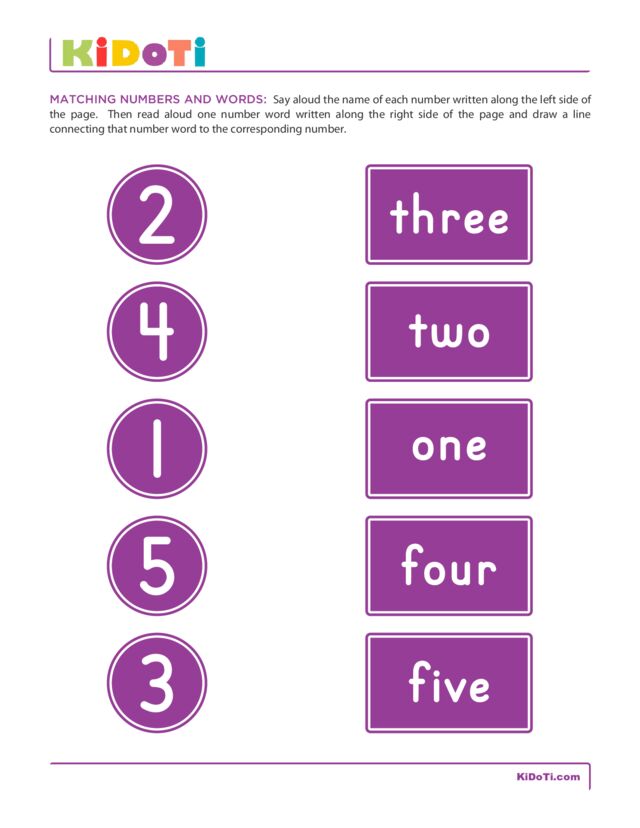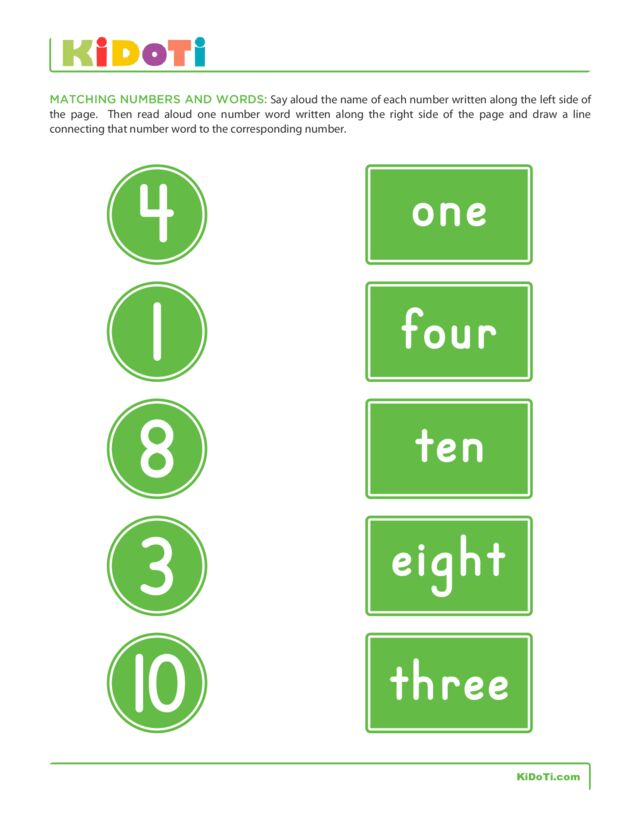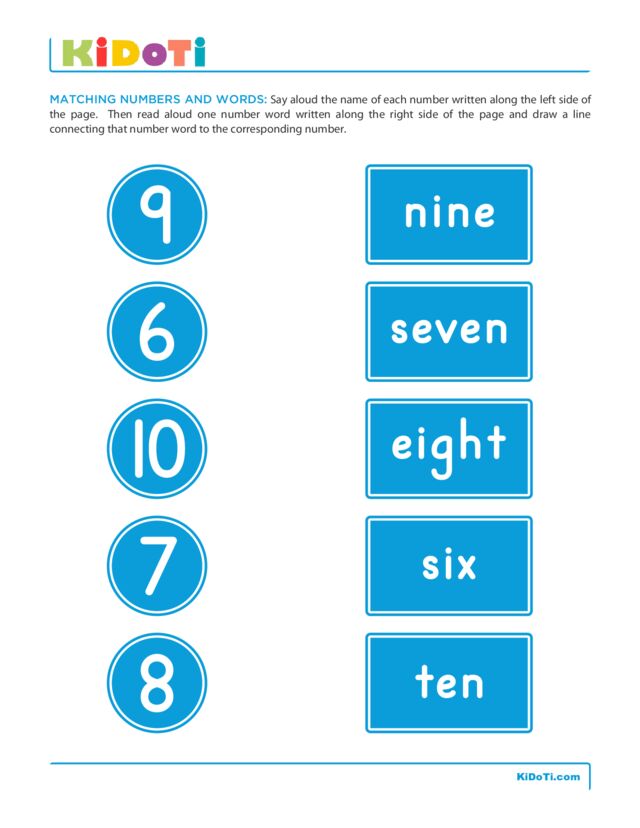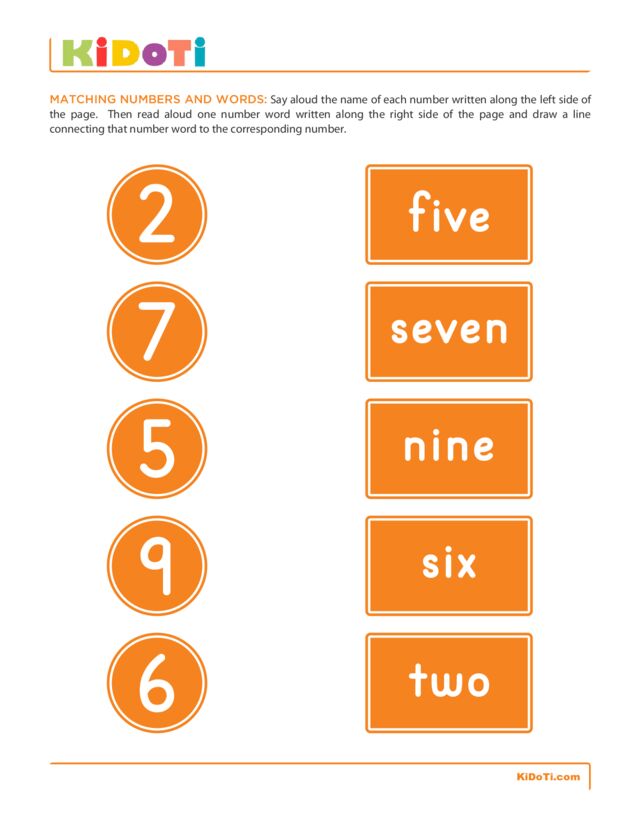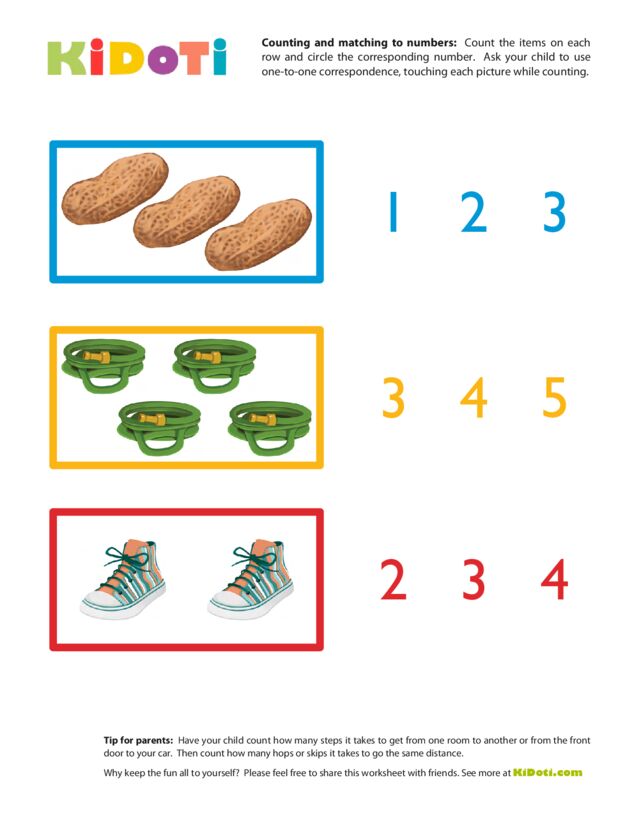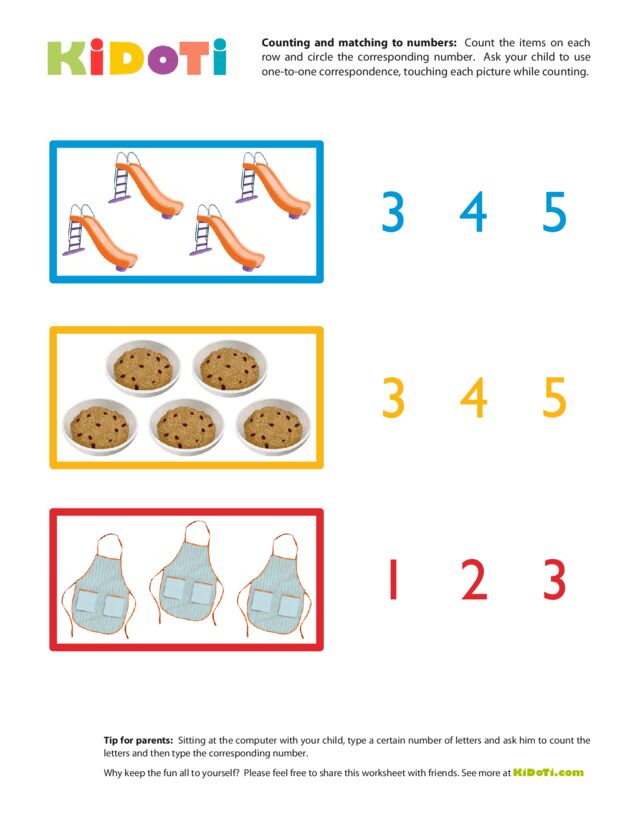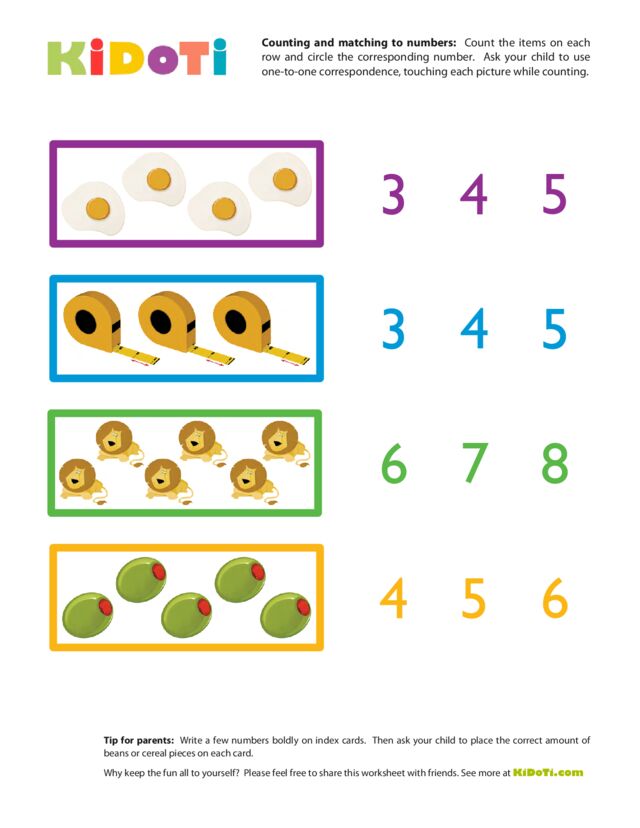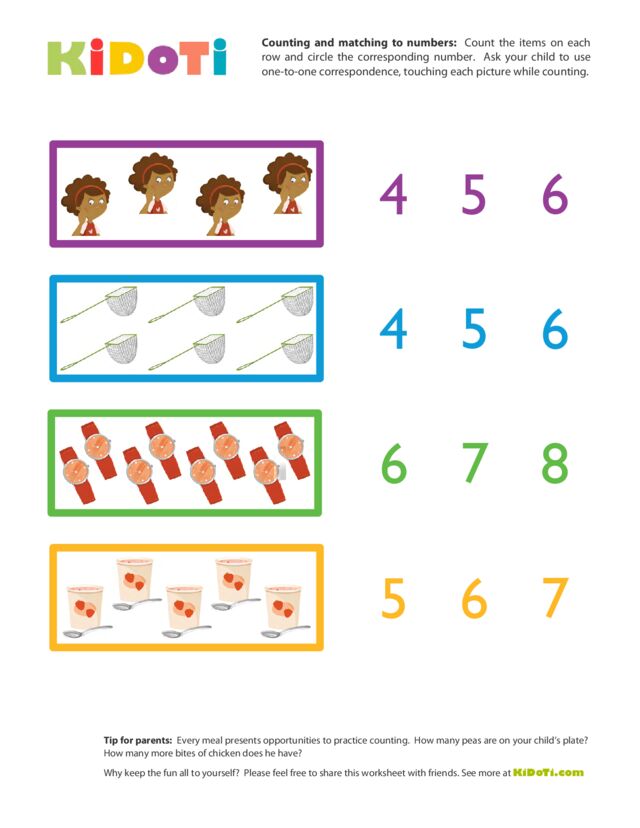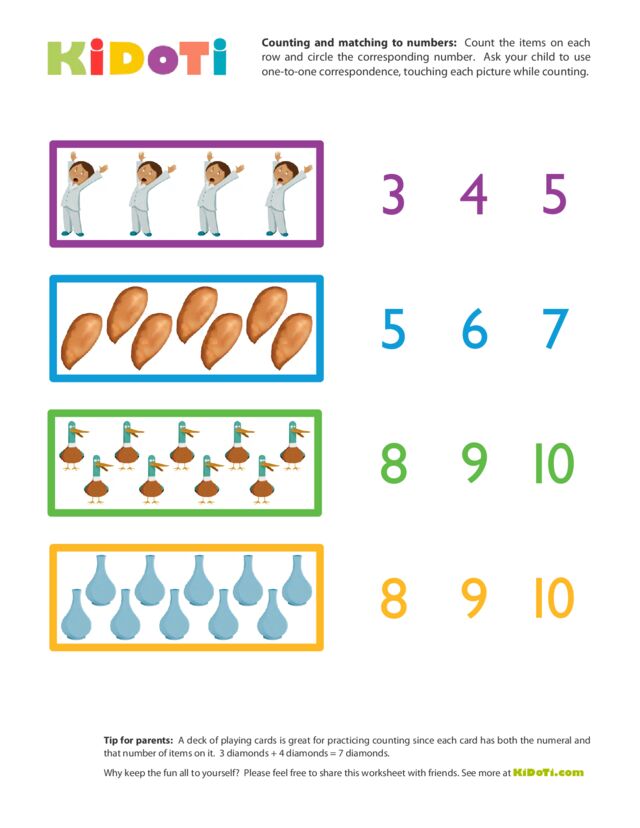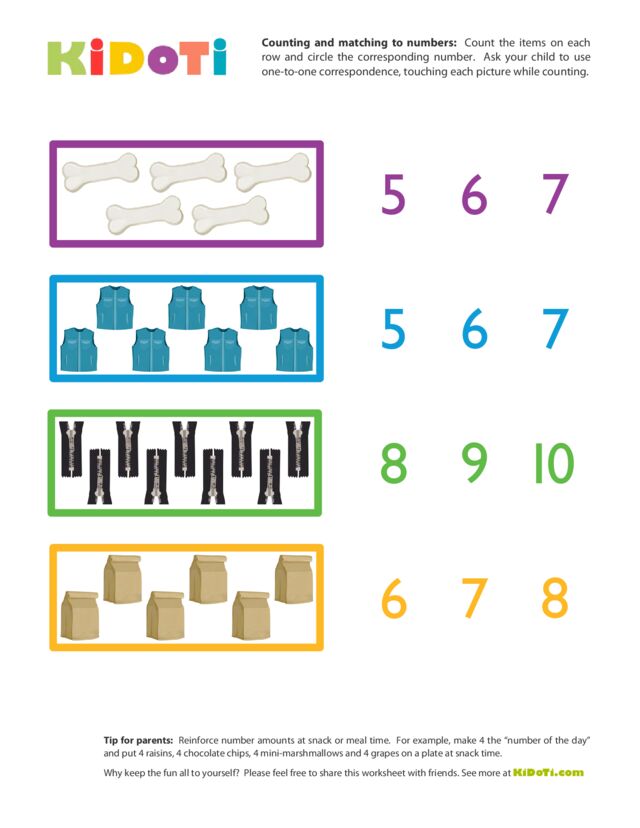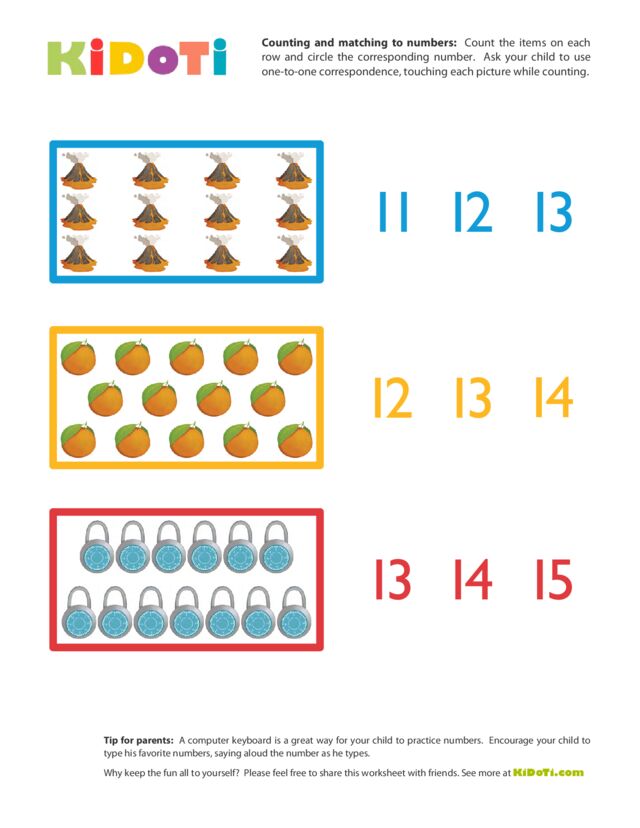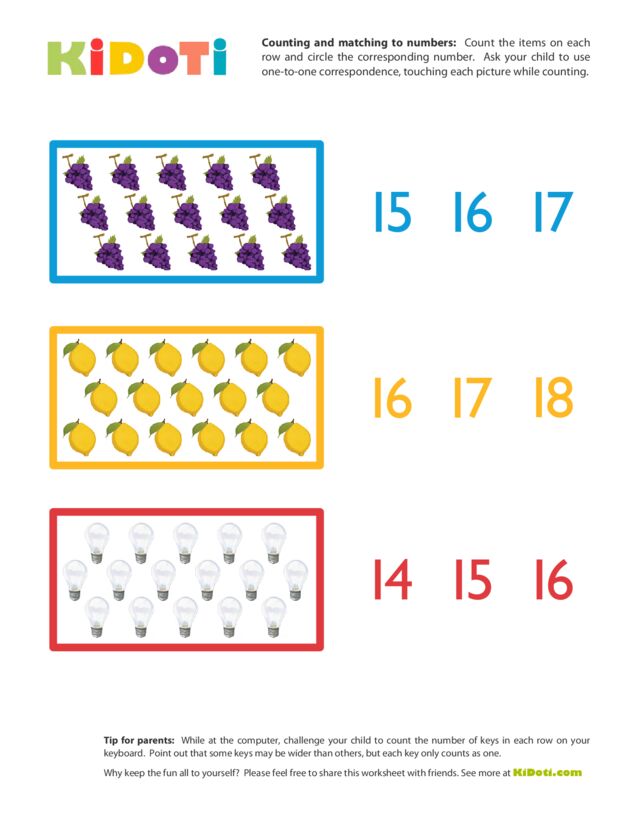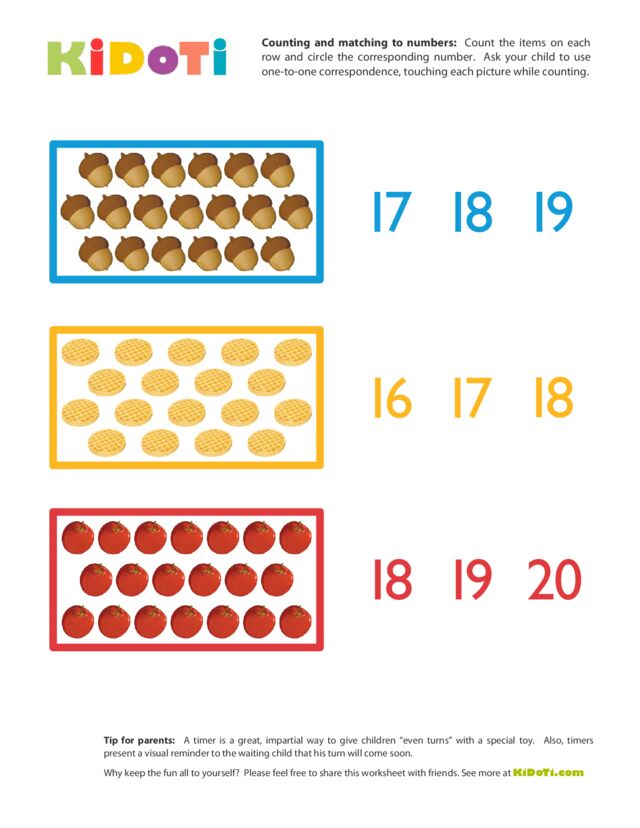Introduction to counting with one-to-one correspondence
Children in preschool and kindergarten will be expected to identify numerals and be able to match each numeral to a group of items with the same number. These worksheets will help your child practice matching numerals to the amounts they represent, as well as practice distinguishing between different numerals.
Matching Numbers and Amounts
Matching Numbers and Words
Counting and Matching to Numbers
The importance of learning numbers
Numbers are all around us and children will need to learn the name for each numeral symbol and the amount that each symbol represents. Many children are familiar with the words that represent numbers – they know their age or are beginning to count, for example. But they may not recognize numbers in printed form. Learning the names and amounts that each numeral symbol represents is one of the foundation skills in mathematics.
The role of number worksheets
Number worksheets are an excellent way to introduce children to numbers and basic counting. Since worksheets are printed, they allow children to clearly see what each printed number looks like. Also, unlike items such as people, buttons or pencils that can move around while being counted, pictures on a worksheet page remain fixed in one place which allows them to be easily counted. Lastly, while older children may be able to count simply by touching each item one time while counting, a number worksheet allows a younger children to use a pencil or marker to cross off each item as they count, ensuring they do not count any pictures twice.
Activities to try at home to supplement the number worksheets
- Sitting at the computer with your child, type a certain number of letters and ask him to count the letters and then type the corresponding number. Or, encourage your child to type his favorite numbers, saying aloud the number as he types.
- When counting objects, always count from left to right. This gives the eyes important practice moving from left to right, which is how the eyes must move when reading words.
- Count to 20 (or by 2s to 40) while your child washes his hands or brushes his teeth. It will ensure he washes for an appropriate length of time while also reinforcing counting skills. Also, every meal presents opportunities to practice counting. How many peas are on your child’s plate? How many more bites of chicken does he have? Or, reinforce number amounts at snack or meal time. For example, make 4 the “number of the day” and put 4 raisins, 4 chocolate chips, 4 mini-marshmallows and 4 grapes on a plate at snack time.
- A deck of playing cards is great for practicing counting since each card has both the numeral and that number of items on it. 3 diamonds + 4 diamonds = 7 diamonds.
- Have your child count how many steps it takes to get from one room to another or from the front door to your car. Then count how many hops or skips it takes to go the same distance.
- Point out speed limit signs as your drive with your child. Explain how a 20 MPH limit means you need to go slower than a 65 MPH limit, for example, since 20 is less that 65.
